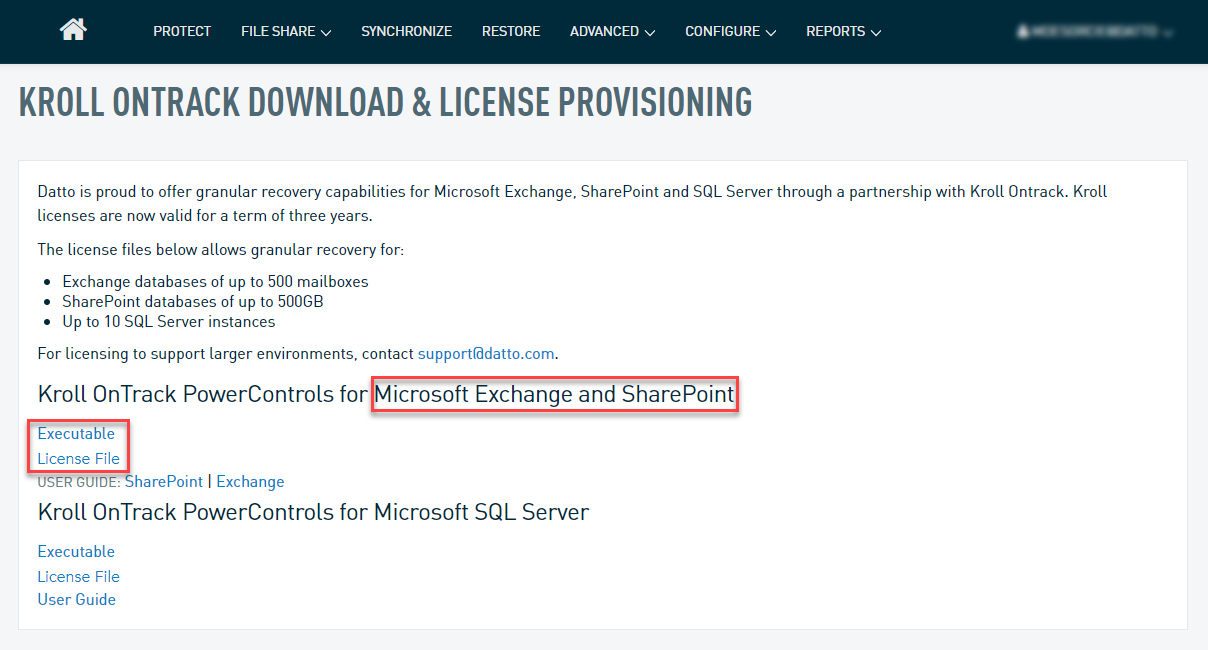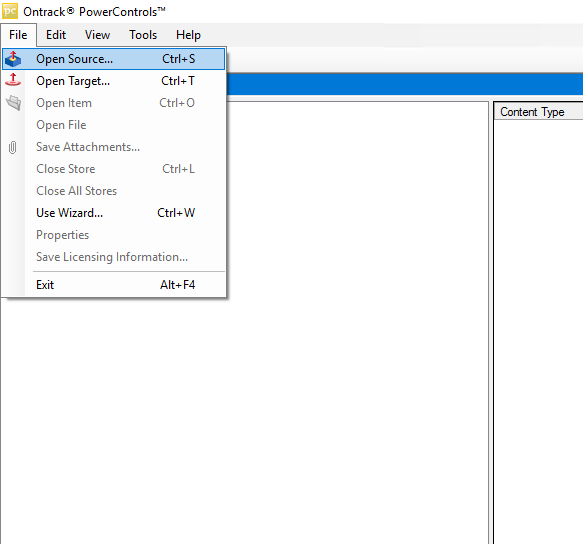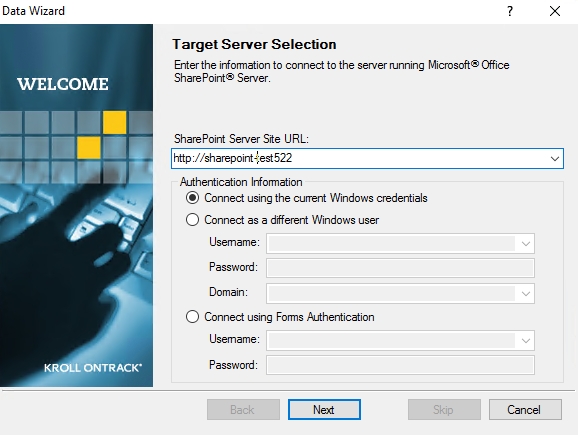Sharepoint restore with Ontrack PowerControls
This article explains the process to perform a granular Microsoft SharePoint restore using Ontrack PowerControls.
Environment
- Datto SIRIS
- Ontrak PowerControls for Microsoft Exchange
- Ontrak PowerControls for Microsoft SQL Server
Licensing Information
Ontrack PowerControls licenses expire after a set period. If the license on your device shows expired, you'll need to provision one from the same location. Datto provides this license on SIRIS devices at no additional charge.
IMPORTANT ALTO users not on per-agent pricing must purchase this service at an additional cost. Contact your Sales Executive, or navigate to the Purchasing & Billing > Service Billing category on the Datto Partner Portal, if you need to purchase a PowerControls license for an ALTO appliance.
NOTE Datto appliances use Ontrack PowerControls version 9.3 to perform restores. Other versions of this software are unsupported.
System Requirements
Supported Operating Systems:
- Windows Server 2008
- Windows Server 2008 R2
- Windows Server 2012
- Windows Server 2012 R2
- Windows 7
- Windows 8
- Windows 10
IMPORTANT PowerControls supports 32-bit and 64-bit versions of the operating systems listed above. Operating systems must have the latest service packs installed.
Supported SharePoint Versions:
- SharePoint 2007
- SharePoint 2010
- SharePoint 2013
Ontrack PowerControls can read .mdf, .ndf, and .ldf files.
- Intel Pentium-compatible processor
- 1024 MB RAM minimum
- 200 MB of free hard disk space for the installation of Ontrack PowerControls
- Monitor with 800 x 600 or higher screen resolution
Process
Download and install Ontrack PowerControls for Microsoft SharePoint on a Windows PC that can connect to the SharePoint. To do this:
Log into the GUI for your Datto appliance. Go to the Advanced menu, and click Granular Restore. Click to download the Executable and the License File.

Install and activate the program. You do not need to install PowerControls on the SharePoint server, but you must be able to connect to the server from the machine you install it on.
To be able to retrieve your SharePoint data, you will need to know its storage location. If you do not have this information, log into your SharePoint server to verify.
To start the File Restore, connect to the Datto Device's UI.
Select the Agent to restore from.
Then, select File Restore.
Choose the recovery point needed, from the drop-down.
Click Start File Restore. You will see the Mount Recovery Point screen.
Click the Mount button, and you will see the Samba share information.
If you are unable to connect to your SharePoint server, you can use Ontrack to export the restore data locally.
Select Add, and browse to the SharePoint datastore location. Select the .mdf, .ndf, and *.ldf files you want to restore. Click Finish to complete the process.

Click Finish. The restored Content Database will display in the left panel of the GUI. Selecting any item will display its contents in the right-hand plane. Use the Export feature to copy the data to a location of your choice.
Connecting to the SharePoint Target






